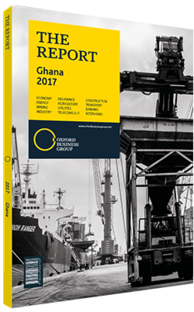Rice farming in Ghana changes with policy initiatives and production trends
According to Ghana’s Ministry of Food and Agriculture, rice consumption in Ghana has steadily increased over the last two decades, joining cassava and yams as one of Ghana’s three most-consumed commodities. Between 1999 and 2008, rice consumption grew from 17.5 kg to 38 kg per capita and is expected to reach 63 kg per capita by 2018. With population growth, urbanisation and shifting consumer preferences, demand for rice is expected to continue expanding in the coming years. In 2016 then-President John Dramani Mahama announced that the government plans to become a net exporter of rice by 2020.
Rice Trade
Despite Ghana’s relatively large agricultural sector, which accounted for over 20% of GDP and in 2013 employed 45% of working Ghanaians, the country is a net importer of a number of fundamental agricultural products. According to the US Department of Agriculture (USDA), Ghana consumed 980,000 tonnes of rice in 2015, and yet only produced 330,000 tonnes, or roughly 34%, domestically. This substantial gap was filled by imported rice, primarily from the US, Vietnam, Thailand, Pakistan and Togo. According to the Food and Agriculture Organisation of the UN (FAO), poor weather conditions hampered cereal production across sub-Saharan Africa in 2015 and drought conditions related to El Niño are predicted to continue inhibiting yields.
While a gap exists, domestic production is improving. Excluding a disappointing season in 2015 due to poor weather, Ghana’s domestic production increased by 12% over the 2010-15 period, but the challenge is that domestic consumption increased by double that rate over the same time-frame. As a result, Ghana imports between $300m and $500m of rice annually.
Growing Rice
Ghana has relatively high levels of rainfall, and its tropical climate makes it a conducive environment for growing a number of staple agricultural crops including rice. Ghana primarily grows the Oryza sativa and Oryza glabertima rice varieties. “If we put in place the infrastructure needed, adopt the appropriate and up-to-date technologies supported by services, rice farmers can produce three to four times a year depending on the variety,” Edem Azagloe, president of the African Youth Network for Agricultural Transformation, told OBG.
Most production – nearly 40% in 2010 – occurs in the Northern Region where, according to Feed the Future, per capita production is three to five times the national average. Northern Ghana also has the highest rate of food insecurity in the country, suggesting that investments in support of rice cultivation in the north could increase production and reduce poverty. “The government is working through the Savannah Accelerated Development Authority (SADA) to prepare the mostly dry SADA Zone in the northern part of the country for active agri-business, particularly regarding the commercial production of yams, maize, cashew, shea nuts and rice,” Patrick Paintsil, columnist at the Business & Financial Times, told OBG.
Government Intervention
In recent years, rice cultivation has benefitted from a number of programmes aimed at increasing domestic production. In 2008 Ghana released the National Rice Development Strategy (NRDS), with the goal of doubling rice production by 2018 and improving quality to increase demand for domestic rice. As part of the NRDS and the Food and Agricultural Sector Development Policy II, the government provided extension services, stabilised prices through the National Buffer Stock Company, which the government formed to intervene in staple markets such as maize and rice in order to set minimum prices at the beginning of the growing season.
You have reached the limit of premium articles you can view for free.
Choose from the options below to purchase print or digital editions of our Reports. You can also purchase a website subscription giving you unlimited access to all of our Reports online for 12 months.
If you have already purchased this Report or have a website subscription, please login to continue.

